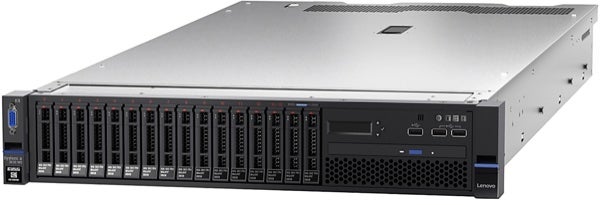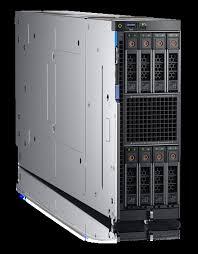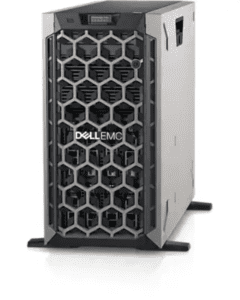This article is a quick start guide to rack servers, blade servers, tower servers: how to understand their advantages and shortcomings, and how each type fits into your server requirements.
See also: Top Rack Servers of 2021
Before we go in-depth, let’s look at a quick summary of each:
- Rack servers are mounted on standardized racks that can reach 10 feet in height, allowing the data center to efficiently deploy dozens of rack-mounted servers.
- Blade servers are small circuit boards that act as servers within their server enclosure; they are an excellent choice for high processing power in a dense environment.
- Tower servers come with the capacity for high optimization and customization, allowing organizations to match the server configuration to their needs.
Jump to: Comparison Table
What Is a Rack Server?
A rack server is a server mounted inside a rack. Rack servers are typically general-purpose servers that support a broad range of applications and computing infrastructure. The racks stack servers vertically to save data center floor space. The more equipment that admins can stack vertically, the more equipment they can house.
Standardized racks are measured in units (U’s) that are 1.75 inches tall and 19 inches wide. Rack servers fit into these dimensions by vertical multipliers, meaning that rack server heights may be 1U, 4U, 10U, or higher, like the 10 foot tall 70U rack that came out in 2016. Additional devices are also manufactured to fit the rack unit standard, so companies can make use of empty units in their racks.

Rack Server Pros
• Self-contained: Each rack server has everything necessary to run as a stand-alone or networked system: its own power source, CPU, and memory. This enables rack servers to run intensive computing operations.
• Efficiency: Rack-mounted servers and other computing devices mke highly efficient use of limited data center space. Rack servers can be easily expanded with additional memory, storage, and processors. And it’s physically simple to hot-swap rack servers if admins have shared or clustered the server data for redundancy.
• Cost-effective: Smaller deployments offer management and energy efficiency at lower cost.
Rack Server Cons
• Power usage: Densely populated racks require more cooling units, which raises energy costs. Large numbers of rack servers will raise energy needs overall.
• Maintenance: Dense racks require more troubleshooting and management time.
What Is a Blade Server?
A blade server is a server enclosure that houses multiple modular circuit boards called server blades. Most blade servers are stripped down to CPUs, network controllers, and memory. Some have internal storage drives. Any other components—like switches, ports, and power connectors—are shared through the chassis.
The enclosures typically fit rack unit measurements, which allows IT to save space. Admins can cluster blades or manage and operate each individually as its own separate server, such as assigning applications and end-users to specific blades. Their modular architecture supports hot swaps. Blades have small external handles, so it’s a simple matter to pull out or replace them.
See also: Best Blade Servers 2021
Blade servers have high processing power to serve complex computing needs. They can scale to high performance levels, if the data center has enough cooling and energy to support the dense infrastructure.

Blade Server Pros
• Low energy spend: Instead of powering and cooling multiple servers in separate racks, the chassis supplies power to multiple blade servers. This reduces energy spend.
• Processing Power: Blade servers provide high processing power while taking up minimal space.
• Multi-Purpose: They can host primary operating systems and hypervisors, databases, applications, web services, and other enterprise-level processes and applications.
• Availability: The blade server environment simplifies centralized monitoring and maintenance, load balancing, and clustered failover. Hot swapping also helps to increase system availability.
Blade Server Cons
• Upfront costs: Over time, operating expenses are reasonable thanks to simplified management interfaces and lower energy usage. However, initial capital, deployment, and configuration costs can be high.
• Energy costs: High density blade servers require advanced climate control. Heating, cooling, and ventilation are all necessary expenditures in order to maintain blade server performance.
What Is a Tower Server?
Tower servers are servers in a stand-alone chassis configuration. They are manufactured with minimal components and software, so mid-size and enterprise customers can heavily customize the servers for specific tasks. For example, tower servers usually do not come with additional components like advanced graphic cards, high RAM, or peripherals.
Tower servers are typically targeted to customers who want to customize their servers and maintain a customized upgrade path. For example, customers can configure tower servers as general-purpose servers, communication servers, web servers, or network servers that integrate using HTTP protocols. Buyers may order the customization they need, or do it themselves when the tower server is shipped to their site. Another usage case is a smaller business that needs a single powerful server to run multiple processes and applications.
Externally they resemble desktop towers, and—like desktops—they do not share input devices. Multiple tower installations will require separate keyboards, mice, and monitors; or switches that make it possible to share peripheral devices. They can share network storage like any other type of server.

Tower Server Pros
- Efficient scalability: Tower servers come with minimal configuration, so IT can customize and upgrade them based on business needs. They are less expensive to buy than a fully loaded server.
- Low cooling costs: With their low component density, towers are less expensive to cool than dense racks or blades.
Tower Server Cons
• Upgrade expense. Many customers buy tower servers for the customization and not low capital costs. High-end hardware components and software will raise the ongoing price considerably.
• Large footprint: These servers do not fit in racks and consume data center space. They require opening the enclosure to troubleshoot and add or upgrade internal components.
• Awkward peripheral management: In multiple tower server environments, IT must invest in switches or re-plug external devices into each separate server.
Blade vs. Rack vs. Tower Servers: At-a-Glance
All three server types can work in your data center. The choice is not so much what they can do—all three server types are capable of high performance. It’s about what footprint and architecture best suits your computing needs and data center build.
|
Server Type |
Definition |
Usage Case |
|
Rack server
|
Designed without an external hard enclosure; slots into the bays of a rack framework. |
For businesses who need up to 25 servers, but have limited space in the data center. |
|
Blade server
|
A circuit board designed with minimum server components. Requires an enclosure that houses multiple blades and provides power and cooling, networking interconnects, ports, and management interface. |
High-speed processing in a small footprint. Blade servers work well in high scalability environments without sacrificing significant physical space. |
|
Tower server
|
A stand-alone server built in an upright chassis. Towers generally come with minimal components and pre-loaded software, so users can optimize them to their specific needs. |
In a small data center or closet, a tower server can cost-effectively scale with growing data. Larger environments can benefit if the business requires high optimization and customization in their server. |

